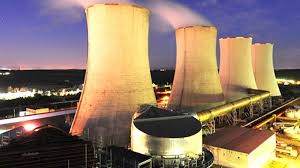Work on 150MW coal project starts
Work has started on the 150MW first phase of a coal-fuelled private power station in Hwange to eventually generate an additional 750MW of power to the national grid.
The privately-funded power station being built by Zambezi Gas and Coal Mine is a response to the calls for more independent power producers, that is private companies outside the Zesa ambit, to invest in the energy sector and sell power to Zesa for distribution.
These power stations will add to the extra capacity being built for Zesa.
Independent power producers have been identified as key in offsetting the power deficit which has significantly impacted business including mining in recent weeks resulting in increased load-shedding and while filling gaps in capacity could position the country to export excess power to other nations.
Zambezi Gas and Coal Mine Company has already mobilised $60 million of the required US$250 million from internal resources for the initial phase of the project which has been granted a licence while an implementation team is in place.
Construction of site offices in Hwange has already begun so the work on the first phase to generate 150MW within 24 months can start.
The power station follows Government’s move to liberalise the coal mining sector where several new businesses have begun operations while others are at different levels of implementation.
In an interview Zambezi Gas and Coal Mine Company shareholder Mr Linos Masimura said the value addition project was being wholly spearheaded by Zimbabweans.
“The licence has been granted, implementation team has been set, the offices in Harare are operational full time, then we have site offices in Hwange. We are starting the construction site offices and hoping to complete them in the shortest time,” said Mr Masimura.
“We are in the process of adding more funders to the project in addition to our own funds. What we are also doing is we are not going to stop, waiting for other investors. We are proceeding with what we have got. Anyone who wants to join in will find us along the way.”
The first phase is expected to be complete within two years while the second phase with output of 600MW is expected to be complete three years after the first phase.
“We should be faster on the second phase because some of the infrastructure needed will be constructed during the first phase. There is interest from several investors to participate in the project. More are expected on the second phase after seeing what we would have achieved in the initial phase,” said Mr Masimura.
With concern being raised across the world on the attendant impact of fossil fuels as shown at the recent COP26 United Nations Climate Change Conference in Glasgow which has prompted countries to move towards renewable and cleaner energies, the project is set to minimise the emissions from a coal plant.
Coal, said Mr Masimura, could be cleaned to limit its impact on the environment through new technologies but Zimbabwe needed a base load from an abundant resource.
“Coal can be cleaned using technology. In Africa we have challenges in providing access to energy in line with Sustainable Development Goals, so we need to provide the energy first and then talk of clean energy and ways of doing it,” he said.
Association of Mine Manager of Zimbabwe president Engineer Elton Gwatidzo welcomed moves by private players to produce electricity and relieve the power utility, Zesa.
“As miners, load-shedding is seriously affecting our operations as we have to incur costs in getting alternative energy. Having such a development where private businesses produce power augers well for the effort we are putting in to revive and grow the mining sector,” he said.-The Herald









